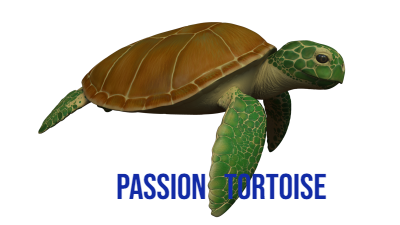Subtotal: $200.00
Reeves Turtle for sale
$100.00 – $300.00
Reeves Turtle for sale | japanese reeves turtle for sale | reeves turtle for sale near me
REEVES TURTLE CHINEMYS REEVESI. The reeves turtle for sale comes from mainland China and Japan, where it is poached for food to near extinction and is now classed as threatened.
Hot House Turtles is proud to support Save The Asian Turtle Species, where it is hoped that one day Reeve’s Turtles will be released into safe sanctuaries in their country of origin, free of poachers.
FEEDING Turtles reared on Hot House Turtles frozen Turtle Food will thrive as the fish based diet contains necessary calcium and other minerals and vitamins to ensure turtle shell quality and general well being. You can also feed you turtles on Live Food such as Mealworms & Waxmoth larvae.
ENVIRONMENT
- Tank Size – Hatchlings should be reared in a tank of approximately 60x30x30cm and for a pair this will probably only be adequate for about 6 – 18 months. A pair of 15-25cm turtles need a minimum 120x60x60cm tank.
- Water Depth – There is no maximum water depth but the minimum is twice the turtle shell length,
- however, do not have the water level or floating island too close to the top of the tank as turtles are good climbers and your pet could climb out. A drop of 50cm or more on to a hard surface could kill your turtle.
- Water temperature – I recommended keeping the water temperature of your tanks at 26C to avoid your Turtle refusing to eat. Once water temperatures drop below 15C Turtles will stop eating and can stave to death as these temperatures are too high for successful hibernating, and too low for digesting food successfully. We can advise what size heater you’ll require for the volume of water your Turtle lives in.
- Water Quality – Regular water changes will assist in maintaining the water quality. Your turtle tank should be thoroughly cleaned every week. Poor water quality leads to disease. The biggest cause of death with pet Turtles is ammonia poisoning. Your tank water can look clean but the ammonia levels due to their urine can be off the scale and Turtles once poisoned can die within hours.
LIGHTING
When keeping Reptiles in captive environments we need to provide artificial sunlight.
Not any old light will do!!! There are specific Reptile lights some are different shapes and come in many different sizes. Every keeper needs to be made aware of what light is right for their Reptiles well being. So here we go, and I hope that what you are about to learn is not too confusing.
- UVA / UVB. – What does all this mean??? The UV spectrum is broken up into three parts: UVA, UVB and UVC, all of which are present in natural sunlight. UVA and UVB are essential for Reptiles wellbeing. UVA is the visible light range, and is responsible for normal behaviours such as feeding and activity. UVB is a non-visible wavelength, and allows the synthesis of vitamin D3, which helps process calcium and prevent Soft Shell in Turtles and Metabolic Bone Disease in Lizards. (Metabolic Bone Disease is particularly common with Bearded Dragons and Eastern Water Dragons that have incorrect lighting)
-
WHICH IS THE RIGHT LIGHT FOR MY REPTILE – “Sun-worshippers”. In the wild these Reptiles spend many hours a day exposed to the sun and high UVB levels. They require high levels of UVB!! If you keep any Reptile in captivity in New Zealand,
- you are bound to have a “Sun-worshipper”, therefore it is imperative that you purchase a Reptile specific light with the highest possible UVB output. The Florescent Tubes that you will find for sale in New Zealand currently range from 2.0, 5.0, 8.0, and 10.0. These numbers represent the percentage of UVB wavelengths that they give. The higher the number the higher the percentage of UVB,
- the better that light is for the wellbeing of your Reptile. We recommend either an 5.0 or 10.0 for turtles
- INTENSITY OF LIGHT – Glass filters 95% of UVB. Fly mesh filters 30% of UVB. It is best to have no lids on your Turtle tanks, and to mount the light on the inside of your Lizards environment. There are two types of Reptile bulbs available, UVA / UVB Fluorescent Tubes and Compact UVA / UVB Low-energy Bulbs. In order for your Reptile to gain the highest possible UVB% from your bulb,
- the distance between your Reptiles sunning area and
- the UV bulb must not exceed 300mm The further your Reptile is from the light, the UV light levels are greatly reduced. Also note that the Florescent Tubes and Compact Bulbs need to be changed as per the manufacturers recommendations. Usually annually, as the UVA / UVB output is reduced over time. Even though the light still goes, they are of no benefit to your Reptile at all!!
- AMOUNT OF LIGHT – 10 hours of artificial light is the minimum per day. An easier way to make sure that your Reptile is getting enough UVB is to turn the lights on when you get up in the morning and off when you go to bed.
| Age | Hatchling( baby), Juveniles, Adult |
|---|
3 reviews for Reeves Turtle for sale
Add a review Cancel reply
Related products
Turtles
Turtles
Turtles
Turtles
Turtles
Turtles

 Reeves Turtle for sale - Hatchling( baby)
Reeves Turtle for sale - Hatchling( baby) 










Kelvin –
my pair arrived safely thanks for the free food you added it really helped to sustain them
Cassie –
received my turtle within 24hrs as i was told thanks very much
Frankline –
my turtle arrived safely thanks very much Passion Tortoise